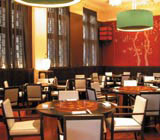Demand for office space fuels workplace design

The demand for office space in England and Wales is rising at its fastest rate in four and a half years, according to a survey by the Royal Institution of Chartered Surveyors.
The figures, published last week, show that while the market in London remains sluggish, the remainder of northern and southern England showed ‘firm’ rises in activity during the fourth quarter of 2004. It is the strongest growth since the days of the dotcom boom at the beginning of the decade.
According to the RICS, the results point to a ‘broad-based market upturn’ in what is described as an upbeat corporate climate. ‘Office demand is still driving the commercial sector, although the industrial and particularly retail sectors look set to pick up in 2005. Investor appetite for commercial real estate is booming,’ says RICS economist Milan Khatri.
Nevertheless, lease lengths are still in decline and landlord inducements, such as periods of reduced rent, remain prevalent. Demand for retail and industrial premises remained flat during the quarter.
A rise in occupier demand is filtering through to the office interior design sector, according to BDG Workfutures head of business development Nick Lintott. ‘The marketplace has been steady for a couple of years, but we are beginning to see signs of increasing activity now,’ he says. To meet a corresponding rise in the volume of work, the consultancy is currently looking to recruit design staff ‘at all levels’, adds Lintott.
Despite the upswing, excess supply in London means that many offices remain vacant. The Norman Foster-designed Swiss Re ‘Gherkin’ building may have gained design plaudits, but it is currently half empty. According to reports last week, private equity company 3i is considering relocating its corporate headquarters to the Gherkin, having also shortlisted Cardinal Place, a forthcoming development in Victoria, and Condor House, situated near St Paul’s Cathedral.
BDP Design managing director Martin Cook says that the Government’s reorganisation of certain Civil Service departments to areas outside the capital is resulting in greater regional activity. ‘There is lots of growth in Manchester at the moment and we will also see that happening in Liverpool,’ he says.
The announcement of strong demand in January bodes well for workplace design consultancies for the remainder of the year, according to Lintott. He says that indications from property management companies show a rise in interest from prospective clients, which should lead to design projects down the line. ‘The first quarter is looking great [for BDG Workfutures] and I would expect it to improve later into the year,’ he explains.
According to Cook, ‘It is a very exciting time because as well as demand picking up, wireless technology is changing all the dynamics of design for the workplace.’
As an example of the wireless office, he cites BDP Design’s work on the BT Ignite offices in Leavesden. Enhanced as part of a ‘2010 workforce strategy’, the site now serves a ‘huge nomadic workforce’ and the number of employees that use the building has increased significantly.
-
Post a comment




